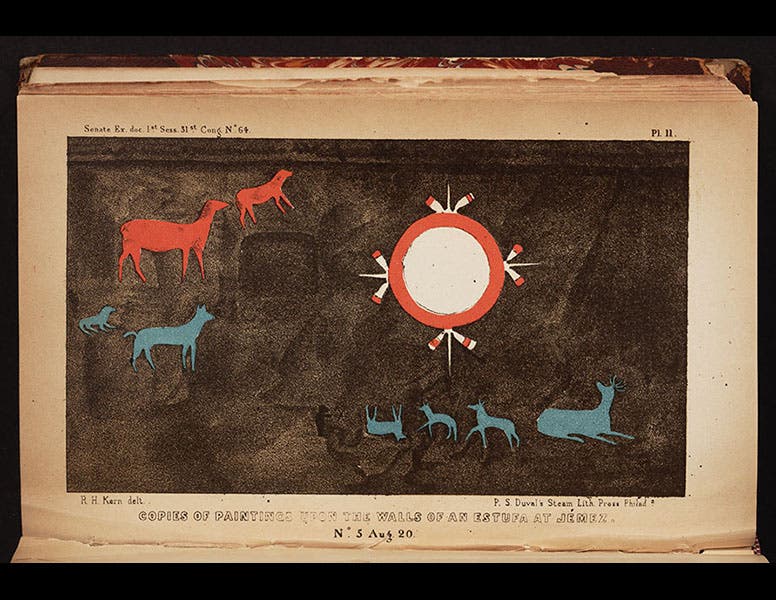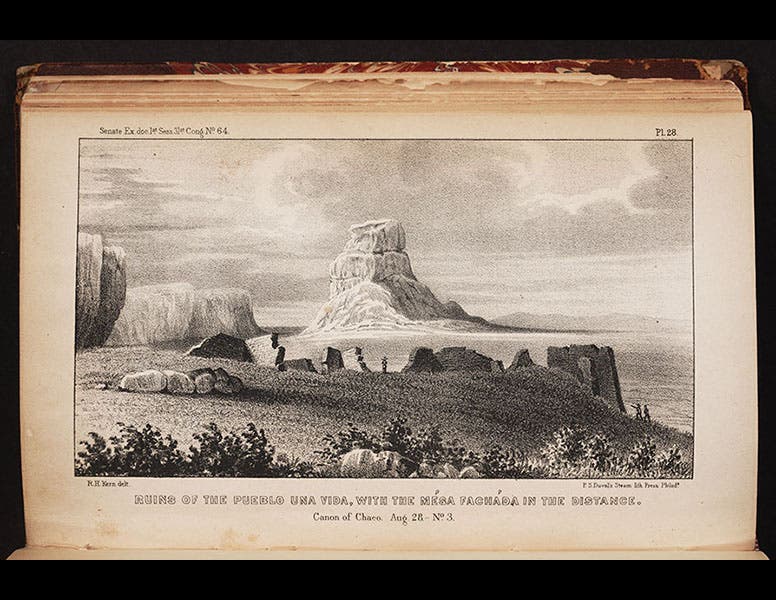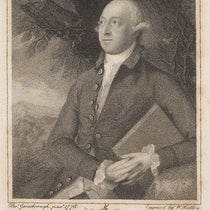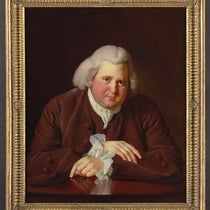Scientist of the Day - James Hervey Simpson

Linda Hall Library

Linda Hall Library

Linda Hall Library

Linda Hall Library

Linda Hall Library

Linda Hall Library

Linda Hall Library
James Hervey Simpson, a U.S. Army Topographical Engineer, was born Mar. 9, 1813. In 1849, Simpson led a reconnaissance expedition to explore the territory west of Santa Fe, New Mexico. With him was Richard Kern, a talented artist from Philadelphia. They encountered the living pueblo of Jemez, where Kern drew not only the Pueblo itself (second image), but some of the wall paintings in a Jemez kiva (third image). In the desert beyond they found petrified tree stumps (fourth image) and sandstone petroglyphs (fifth image), which Kern also sketched. Further west, they stumbled on the ruins of ancient pueblos in Chaco Canyon (sixth image), and numerous shards of pottery that Kern recorded on his sketchpad. And just beyond Chaco Canyon, Kern drew the spectacular Fajada Butte (seventh image), where, in 1977, a solar-solstice-predicting petroglyph would be discovered at the very top.
Finally, Kern’s expedition ventured into Canyon de Chelly, in what is now northeastern Arizona, where Simpson had heard there was an ancient fort built into the canyon wall. The rumors turned out to be well founded, as they eventually wound their way to the spectacular cliff dwellings of Canyon de Chelly. Kern drew these as well, and this may be the very first recorded image of these memorable ruins (first image). Kern and Simpson called the tall central dwelling "Casa blanca", and the "White House" is still a featured attraction at Canyon de Chelly.
When he returned, Simpson wrote and published a narrative of the expedition, Reports of the Secretary of War, with Reconnaissances of Routes from San Antonio to El Paso ... and the Report of Lieut. J. H. Simpson of an Expedition into Navajo Country (1850). Simpson's report is only 112 pages long, but appended are 74 lithographs based on Kern's drawings. We displayed the image of the cliff dwellings at Canyon de Chelly in our 2004 exhibition, Science Goes West, and again in our 2013 exhibition, Crayon and Stone. Neither of these exhibitions is available online.
Simpson lived to a ripe old age, for an Army officer who crossed paths with the Civil War. Kern was not so fortunate, dying in a Paiute ambush while on another Army mission, the Gunnison expedition of 1853.
Dr. William B. Ashworth, Jr., Consultant for the History of Science, Linda Hall Library and Associate Professor, Department of History, University of Missouri-Kansas City. Comments or corrections are welcome; please direct to ashworthw@umkc.edu.






